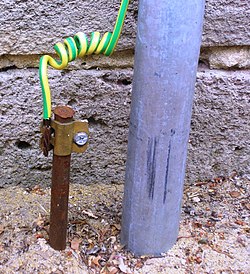I have a general wiring question for anyone willing to put in their two cents. I have a 2" conduit carrying low voltage and data between two buildings and I want to add surge protection on each end of the conduit. The garage end is easy but the house end is a little more difficult.
I used a 2" LB connector on the outside wall of the house which is just about large enough to house the DTK LVLP surge protector but it will be a very tight fit. Rather than removing the LB and replacing it with a utility box I am considering attaching a small box to either the removable face of the LB or to the side of the LB with a hole allowing me to run cables between the two enclosures.
Does anyone foresee any problem with doing this? There are no high voltage cables in this conduit and never will be, only a 12 volt supply and a couple of cat 5e.
Mike.
I used a 2" LB connector on the outside wall of the house which is just about large enough to house the DTK LVLP surge protector but it will be a very tight fit. Rather than removing the LB and replacing it with a utility box I am considering attaching a small box to either the removable face of the LB or to the side of the LB with a hole allowing me to run cables between the two enclosures.
Does anyone foresee any problem with doing this? There are no high voltage cables in this conduit and never will be, only a 12 volt supply and a couple of cat 5e.
Mike.


